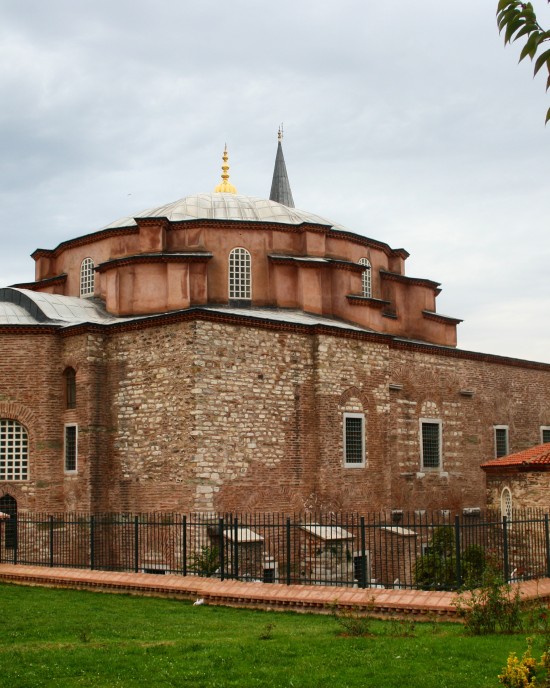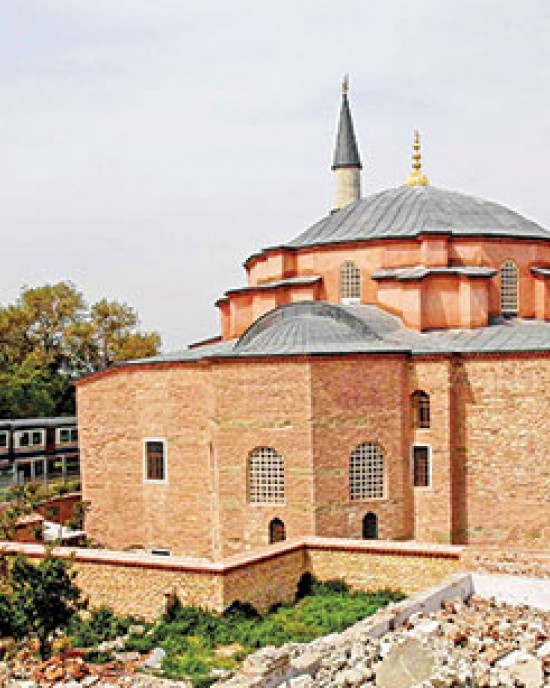



LITTLE HAGIA SOPHIA MOSQUE
The building was built by the order of Justinian – he is also the founder
of Hagia Sophia- towards the year 530. Because the two works bear some
similarities in terms of plan, it was called Little Hagia Sophia in the Ottoman
period. In the same courtyard, there was a basilica type church presented to
the names of Peter and Paul, and there was also a pavilion of the Great Palace
called Hormisdas palace. According to the founding legend, Justinianos I, while
being punished for being involved in an uprising against his uncle, Justinus,
was saved when the Saints Sergios and Bakkhos testified in his favor by
entering the dream of Justinus, and when he became emperor, he built the church
in the name of these saints to pay his debt of gratitude.
According to another legend; After Emperor Anastasios I, Justin, who was
the commander of the palace guards but was illiterate, was chosen by the army
to take the throne. At the end of his reign, Justin I left his nephew Justinian
as heir. Theodora, wife of Justinian, who came to the throne, is a woman who
attracted the reaction of the Roman aristocracy because she was a dancer in the
acropolis. Among those who reacted to Theodora was Anikia Juliana, one of the
powerful women of the Roman aristocracy and famous as the patroness of the
arts. Juliana chooses a different way to show her reaction; In order to show
the power and piety of the Roman aristocracy, she had a magnificent church
built in the name of St Polyeuktos of Melitene (Malatya), who was killed in
251. This church, which was built in the vicinity of Istanbul Municipality
today, has not survived; It was damaged in the earthquake of 1010, looted by
the Latins who entered the city in 1204, and its pillars and some architectural
pieces were transported to Venice with their holy relics. These pieces brought
to Venice were used in St. Mark's Basilica. The famous Akka Pillars of San
Marco did not originate from the city of Akka in Palestine, as the name
suggests, but from the Polyeuktos Church in Istanbul. Theodora's response to this
magnificent response of Anikia Juliana was with the Church of Sergius and Bacchus.
The Little Hagia Sophia Mosque is a good example of a centrally planned
Early Byzantine period structure dominated by a large dome. The dome shell is
not completely flat, but is woven in a wavy form. A similar but different
application of the central plan is also seen in the Church of St. Vitale in
Ravenna, in northeastern Italy. Different variations of this plan are also
available at the Dome of the Rock (Qubbeh al-Sahra) in Quds. Therefore, the
building has an important place in the history of world architecture.
Most of the changes made on it after it was converted into a mosque are
examples of classical Turkish art. With the mausoleum and graveyard, bath,
zaviye (darvish lodge), madrasah (college of that time), and kindergarten
buildings added during the Ottoman period, it ceased to be a mere building and
turned into a complex. Kulliye (complex) is a structure that Turkish-Islamic
States frequently applied, which puts the mosque in the center and creates an
environment for social life around it.
Thus, the Little Hagia Sophia Mosque has survived to the present day as a
work in which Byzantine and Turkish architectures are intricately intertwined.
.jpg)
.jpg)
- Model: LITTLE HAGIA SOPHIA MOSQUE
